November 2018
In this issue
- Message from the OSAC Affairs Director
- Message from the Chair of the FSSB
- What's Up with OSAC 2.0
- Updates from the November All Members Meeting in Houston, TX
- Updates from the Biology/DNA Scientific Area Committee
- Updates from the Chemistry/Instrumental Analysis Scientific Area Committee
- Updates from the Digital/Multimedia Scientific Area Committee
- Spotlight on Professional Organizations
- Related News
- OSAC in the News
- On the Horizon
- NIST Activities
Message from the OSAC Affairs Director
by Mark Stolorow, OSAC Affairs Director
The old clock on the wall is reminding me that it will soon be time for me to make a transition in OSAC and I wanted to say thank you to all of you who have contributed to the launch and successes of this incredible organization. On January 4, 2019, I will be retiring from NIST and turning my current duties over to two other exceptionally able-bodied individuals.
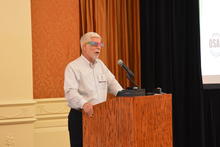
John Paul Jones II will take over my responsibilities in directing the OSAC Affairs team and Karen Reczek will assume my role as the NIST Ex-Officio Member of the FSSB. Both of them are far more capable than I in managing the affairs of OSAC and representing NIST on the FSSB. I know that I am leaving you in good hands.

Standards implementation is certainly where the rubber meets the road in the criminal justice system, but adoption would be inconceivable without the initial development of high-quality standards. The history leading up to this point might seem convoluted to some, but the evolution is traceable directly to the NAS Report Recommendations 5-8 calling for the development and adoption of high-quality standards. Comparing where the forensic science community was in 2009 with today, the enormous progress toward harmonization and standards improvement is attributable in no small measure to the collective efforts of the nearly 800 members and affiliates of OSAC. This organization is unique and the members who have contributed to its birth, growth and achievements have every right to be proud of what OSAC has achieved. There has never been an effort of this magnitude focused specifically on improving the quality of forensic science standards across so many disciplines under one roof. During my forty years as a member of the forensic science community, there has never been the purely voluntary effort of so many of the nation’s most respected experts to debate, assess and prescribe high-quality drafts of standards that are technically sound and consensus-based. Despite passions occasionally running high, the collective energy the members of OSAC put forth dedicated to the mission of improving standards shows the high level of commitment OSAC demonstrates in its desire to strengthen the practice of forensic science.
I want to share my overwhelming gratitude with each and every one of you who has participated in this process. Kudos to all of you who are responsible for making OSAC what it is today and for all of the progress yet to come. It has been an honor to be your teammate. I am looking forward to the next chapter together. Thank you.
Mark Stolorow
Director of OSAC Affairs
FSSB NIST Ex-Officio Member
For more information regarding Mark’s career, see: https://www.nist.gov/blogs/taking-measure/forensic-science-my-dna
Message from the Chair of the FSSB
By Steve Johnson, FSSB Chair
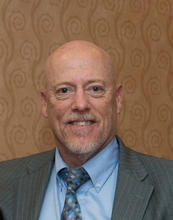
It’s hard to believe that a year has gone by since I was honored to be elected Chair of the Forensic Science Standards Board (FSSB). Needless to say, a lot has gone on over the last twelve months but there is certainly more work to do. As we enter the fifth year of OSAC operations, I’m encouraged to see continued broad support for our mission, the great diversity of our membership and the professionalism each member has exhibited during our standards development enterprise. I’m also happy to see strong practitioner representation (well over 50%) across the more than 550 members of OSAC. Founding members of OSAC felt significant practitioner involvement was essential in developing standards that would be applicable to and consistent with sound scientific forensic methods and techniques. That said, we must remember the value added from other stakeholders involved in OSAC. The researchers, educators, quality assurance specialists, legal experts and others dedicated to the OSAC mission have tremendous knowledge, skills and abilities they bring to the table and their participation is critical to our success. Speaking of entering our fifth year, by the end of September, 2019, we will have completed that fifth year and roughly one third of all our members will have reached the end of their second term in whatever capacity they have served to date. I encourage anyone who would like to consider service on OSAC to apply via the NIST OSAC website. Maintaining solid leadership and active participation will ensure the future success of the organization.
Over the past year we have seen many people come and go. From a FSSB perspective, I want to personally thank Dr. Karen Kafadar for her service as a Research Representative and as the Chair of the Statistics Task Group. Karen decided not to seek reappointment at the end of her first term and she will be missed. Additionally, Dr. Sylvester (Jim) Gates had to leave the Board to pursue additional duties as inaugural Director of the Brown University/Physics Department's Center for Advanced Theoretical Studies. Both Karen and Jim will remain supportive of and will continue to follow OSAC activities. Replacing Karen and Jim are Will Guthrie (NIST) and Dr. Fred Bieber (Harvard University), both of whom bring a welcome perspective on and vested interest to the mission. Finally, as we near the end of the calendar year, I want to thank Mark Stolorow (NIST, Director of OSAC Affairs and Ex-Officio member of the FSSB) as he will be “retiring” shortly after the first of the year. I put retiring in nist-quotes because, knowing Mark’s high energy level, he won’t stop working. We know Mark will continue to support the organization however possible as he enters this next phase of his life. Stepping into the Ex-Officio role on the Board will be Karen Reczek, who currently serves as Chair, Quality Infrastructure Resource Committee. We’ll be working hard to replace her in that capacity but I’m sure there are many qualified candidates that can fill that vacancy. There are dozens of others who have left or joined the organization that I wish I could mention. Suffice to say, we heartily thank those who have left for their dedication and service and welcome those who have come aboard!
Last fall, the FSSB made a change to its Terms of Reference as they apply to the leadership positions on the Board. It was agreed that the positions of Chair, Vice Chair, and Executive Secretary would be yearly appointments through an election by FSSB members. I’m happy to report that Mark Keisler (Vice Chair) and Laurel Farrell (Executive Secretary) were reelected by their peers. They will be serving for the fifth consecutive year and I can’t tell you how much I appreciate and value their leadership and counsel. I was honored to be reelected as Chair and look forward to humbly serving the needs of OSAC through the FSSB. Another change to FSSB administration, was a focus on standards review and approval during our quarterly, in-person meetings. It was decided having the board together to make these critical and nuanced decisions would best serve the standards development and vetting process. This will give the various Scientific Area Committees (SACs) and Subcommittees (SCs) some solid deadlines for submissions of required materials for review.
This past September, the OSAC Leadership Strategy Session (OLSS) met again and I was very encouraged by the positive and professional atmosphere among those in attendance. This group represents the core leadership of OSAC and the discussion was professional and enlightening as well as solutions-driven. We hope that the OLSS will continue to be a “forward-looking” endeavor for the future of the organization. Other accomplishments of note:
- Creation, publication, and socialization of an Implementation Plan
- Outreach by NIST to various stakeholders and entities of interest regarding the future of OSAC (OSAC 2.0)
- Development of “road-mapping” templates to help the SACs and SCs strategize and make progress that’s consistent across the enterprise
I’m pleased to have met everyone who attended the OSAC meeting in Houston earlier this month and I am looking forward to the upcoming plenary session in Phoenix (11-14DEC). I’m sure most will agree that these sessions accomplish a lot by bringing the members together to continue the important work of OSAC. I’m fortunate to be able to attend both sessions and look forward to seeing and catching up with many of our amazing members.
As we near the end of the year, I wish everyone a prosperous and successful close to 2018. May you and your families have a safe and happy holiday season. Finally, I hope for continued success and achievement for OSAC in 2019!
Respectfully Submitted,
Steve Johnson, Chair
OSAC Forensic Science Standards Board
What's Up with OSAC 2.0
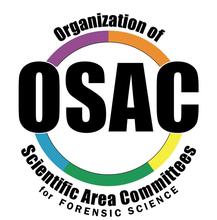
By Karen Reczek, Standards Coordination Office, NIST / OSAC Quality Infrastructure Committee, Chair
When NIST announced the formation of the Organization of Scientific Area Committees for Forensic Science (OSAC) in 2014, NIST also stated that its long-term goal would be to transition OSAC to an outside entity other than NIST. NIST, by nature of who we are imposes some restrictions on the current model of OSAC. NIST is a non-regulatory agency whose core mission is science and research. NIST is bound by federal policy and laws* related to standards development participation and activities.
NIST sent out a Request for Information in the Summer of 2017, asking the stakeholder community for feedback on this next generation model. NIST received fifty-five (55) comments. These comments can be found on Regulations.gov.
I was asked to lead a small cross-functional team of internal NIST staff that began working on considerations for the next generation of OSAC in December of 2017. This team met weekly and in May of 2018, had developed several detailed concepts. NIST reached out to the Department of Justice on two occasions for feedback on these concepts and revised them accordingly.
I presented these revised concepts at a high-level on behalf of NIST, to the Forensic Science Standards Board (FSSB) in June of 2018. The FSSB provided feedback at the meeting and some individuals provided written feedback. Subsequently, Richard Cavanagh and I presented the same presentation to the Board of Directors (BoD)/Lead Committees of several of the professional forensic science associations, including:
- Web conference presentation to the BoD of the AAFS Standards Board (ASB)
- In-person presentation to the BoD of the American Academy of Forensic Science (AAFS)
- In person conference presentation to the BoD of the Association of Forensic Quality Assurance Managers (AFQAM) – Karen only
- Web conference presentation to the BoD of the Association of Firearm and Toolmark Examiners (AFTE)
- Web conference presentation to the BoD of the American Society of Crime Laboratory Directors (ASCLD)
- In-person presentation to the Forensic Science Committee of the International Association of Chiefs of Police (IACP) – Rich only
- In-person presentation to the BoD of the International Association for Identification (IAI)
- Web conference presentation to the BoD of the National Association of Medical Examiners (NAME)
- Web conference presentation to the BoD of the Society of Forensic Toxicologists (SOFT)
Feedback has been received or is being generated from these organizations. Some suggested alternatives have also been provided. NIST welcomes input from the community. To date, all feedback continues to support the need for an organization such as OSAC to improve the state of forensic science standardization. The NIST internal team has begun meeting again to digest the feedback.
The FSSB continues to examine the OSAC mission, priorities, and processes to see where they can identify improvements and make changes in the near term.
OSAC 2.0 is a longer-term initiative. Concepts will continue to be explored with a goal in 2019 to develop a transition plan for future execution. NIST will continue to engage the forensic stakeholder community to plan for the next generation of OSAC.
Updates from the November All Members Meeting in Houston, TX
Member awards were presented at the All Members meeting in November (Houston, TX) during the Chemistry/Instrument Analysis and Crime Scene/Death Investigation SACs and subcommittee's plenary session.
The following members received awards. On behalf of the FSSB and OSAC Affairs, we congratulate the members on their achievements.
Distinguished Individual Award
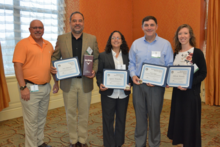
- Chemistry/Instrumentation Analysis SAC
- Agnes Winokur, USDOJ/Drug Enforcement Administration, of the Chemistry/Instrumentation Analysis SAC, Seized Drugs SC, serves as Executive Secretary
- Crime Scene/Death Investigation
- Allison Woody, Harris County (Texas) Institute of Forensic Sciences, of the Crime Scene/Death Investigation SAC, Disaster Victim Identification SC, serves as Executive Secretary
Distinguished Group Service Award
- Toxicology Subcommittee
Honorable Mention
- José Almirall, Chair, Chemistry/Instrumentation Analysis SAC
Updates from the Biology/DNA Scientific Area Committee
By Robyn Ragsdale, Chair of the Biology/DNA SAC
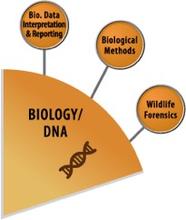
The Subcommittees of the Biology/DNA Scientific Area Committee (SAC) have had a productive summer and are working on discipline roadmaps as well as moving forward with new Task Groups including familial searching, rapid DNA, and Next Generation Sequencing (NGS). We also have several new people joining each of our subcommittees and we are looking forward to meeting them in Phoenix in December.
The Biological Methods Subcommittee has been very active with 12 documents either in process at the OSAC level (5) or submitted to the American Standards Board (ASB) of AAFS (7). Currently, out of their seven documents at ABS, two are open for public comment (ASB Standard 022, “Standard for Forensic DNA Analysis Training Programs” and ASB Standard 077, “Standard for the Development and Internal Validation of Forensic Serological Methods”). Five additional documents are currently in the review process with the Consensus Body at ASB. In Phoenix, the Biological Methods subcommittee will be working to finalize the documents in process at the OSAC level as well as starting their new task groups.
The Biological Data Interpretation and Reporting Subcommittee currently has 11 documents either in process at the OSAC level (6) or submitted to the American Standards Board (ASB) of AAFS (5). They recently had their first standard published by ASB, ANSI/ASB Standard 20, “Standard for Validation Studies of DNA Mixtures, and Development and Verification of a Laboratory’s Mixture Interpretation Protocol.” They currently have two documents open for public comment at ASB (ASB Standard 018, “Validation Standards for Probabilistic Genotyping Systems” and ASB Standard 040, “Standard for Forensic DNA Interpretation and Comparison Protocols”). Additionally, they have three more documents at ASB being addressed by the Consensus Body. Like the Biological Methods Subcommittee, the Biological Data Interpretation and Reporting Subcommittee will be focusing on finishing up their current OSAC documents and starting their new task groups in Phoenix.
The Wildlife Forensics Subcommittee is committed to advancing quality in their diverse field and is currently developing 11 documents addressing such wide-ranging topics as geographical assignment, serological methods for species identification, morphology, and technique validation. Seven of these documents are at ASB and three are open for public comment (ASB Standard 019, “Wildlife Forensics General Standards”, ASB Standard 028, “Wildlife Forensics Morphology Standards”, and ASB Standard 029, “Report Writing in Wildlife Forensics”). In Phoenix, the Wildlife Subcommittee will be working on several OSAC documents as well as discussing several research needs including the need for a standardized STR bear panel.
Updates from the Chemistry/Instrumental Analysis Scientific Area Committee
By Jose Almirall, Chair of the Chemistry/Instrumental Analysis SAC
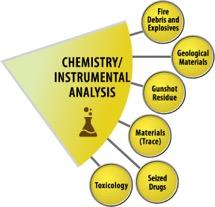
Chemistry and Instrumental Analysis SAC
The Chemistry SAC has drafted a more detailed mission statement and roadmap including initiatives to provide more guidance and direction to the subcommittees, provide better coordination between overarching topics within the disciplines and fostering implementation of OSAC-approved documents. For example, ASTM E2329 “Standard Practice for Identification of Seized Drugs,” the SC members will contact laboratories to determine how many forensic science service providers are using this standard.
The virtual subcommittee working on the Education and Training standard is making progress and will present the standard to the Chemistry SAC for approval soon.
Fire Debris and Explosives (FD&E):
The FD&E SC pitched a guide for the forensic examination and identification of intact explosives in Houston.
E1618 “Standard Test Method for Ignitable Liquid Residues in Extracts from Fire Debris Samples by GC/MS” will be examined and potentially broken up and worked on. Potentially interpretation and classification to be separate documents. FD&E also plans to work on a third component to cover GC/MS.
Toxicology:
Two (2) pitch meetings were presented in Houston.
ANSI/ASB 017: “Standard for Measurement Traceability in Forensic Toxicology” document passed. Notice of intent to publish on the OSAC registry has been submitted to the FSSB and the document will go out for public comment.
Documents in the review process include:
ANSI-ASB 036: “Standard Practice for Method Validation in Forensic Toxicology”-2nd round of comments closed Monday, 05 Nov. 2018.
ANSI-ASB 053: “Standard Practice for Report Content in Forensic Toxicology”-1st round of comments closed Monday 05 Nov. 2018.
ANSI-ASB 037: “BPR: Opinions and Testimony on Toxicology” document has completed its 2nd round of adjudication and is going to ANSI.
ANSI-ASB 054: “Quality Control” document will be out soon for public comment for the first time.
Identification point scheme document-Minimal number of points to ID most samples; document is with SC for two weeks, then will be pitched telephonically possibly in December.
Progress was made on the following work products. Pitch meetings are likely by the next in-person meeting.
“Ethanol Calculations” document: pitch meeting potential by next in-person meeting.
Required Scope and Sensitivity documents: pitch meeting potential by next in-person meeting.
ANSI/ASB 056 “Measurement of Uncertainty in Forensic Toxicology”: pitch meeting potential by next in-person meeting.
Materials:
The Fibers TG presented three pitch meetings in Houston (E2224, E2225, E2228 and a “Thin Layer Chromatography” draft document). An FTIR analysis of fibers and a guide for human hair examinations were also pitched.
The Paint TG is working on E2808 “Standard Guide for Microspectrophotometry in Forensic Paint Analysis”, comments from ASTM, and will work on SEM analysis of paint document.
Tape group reviewed tape and paint training guides and discussed a pyGC (Pyrolysis Gas Chromatography) of tape document.
GSR:
The GSR SC pitched a report writing document in Houston.
The GSR training document and adjudication of some ASTM comments will be reviewed.
ASTM 1588 will be reviewed by the Chemistry SAC before it is sent to ASTM for SDO approval.
Seized Drugs:
The Seized Drugs SC discussed the following documents in Houston:
1) Guidelines for blind testing,
2) Draft interpretation laboratory guidelines: Evaluation libraries and creation of libraries and 3) IR evaluations documents.
The GC/MS interpretation document closed in ASTM with only a few administrative comments.
E2882 “Standard Guide for Analysis of Clandestine Drug Laboratory Evidence;” plan for resubmission to ASTM.
Geological Materials:
“Standard Guide for the Collection of Soils and Other Geological Evidence for Forensic Applications;” addressing feedback. Close to sending to SDO.
“Standard Guide for Determination and Comparison of Color by Visual Observation in Forensic Soil Examination.” Close to sending out for initial comments and pitch meeting.
“Standard Guide for the Forensic Analysis of Geologic Materials by Powder X-Ray Diffraction.” Close to sending out for initial comments and pitch meeting.
- Other documents the SC is working on:
- General analysis guide;
- Polarized light microcopy of mineral;
- SEM-EDS.
The documents may be ready for final discussion in the January SC meeting and followed by a pitch meeting before the next in-person meeting.
- R&D needs were addressed and will be forthcoming to the SAC.
Updates from the Digital/Multimedia Scientific Area Committee
By Richard Vorder Bruegge, Chair of the Digital/Multimedia SAC
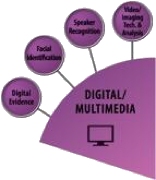
ASTM Standard Terminology Update
ASTM is the Standards Development Organization (SDO) through which many OSAC standards are developed, including most DMSAC standards. Committee E30 on Forensic Sciences includes subcommittees on Digital and Multimedia Evidence, Criminalistics, Interdisciplinary Forensic Science Standards, and Terminology.
In the past, each subcommittee published individual terminology standards, but that is now changing. The Terminology Subcommittee is now working to consolidate terminology across all E30 disciplines into a single document, which will include separate sections for “General (Common) Forensic Science Terms” as well as each E30 subcommittee listed above. This move is intended to make it easier for users of all E30 standards to locate definitions in any given standard.
The transition to this new format was recently approved by the E30 membership, so this change will be implemented in the near future.
The document is formally identified as ASTM E1732-2018a “Standard Terminology Related to Forensic Science.”
DMSAC-ANAB Coordination
DMSAC members continue to work with ANAB representatives to refine guidance for entities conducting forensic analysis of digital and multimedia evidence and are interested in accreditation under ANAB. This work has already resulted in modification to some ANAB guidance documents.
Digital Evidence Subcommittee
The following standards have been approved by ASTM E30 and will be proposed as additions to the OSAC Registry:
- ASTM E3150-2018 “Forensic Audio Laboratory Setup and Maintenance”
- ASTM E3016-2018 “Standard Guide for Establishing Confidence in Digital and Multimedia Evidence Forensic Results by Error Mitigation Analysis”
The following standards from the DE Subcommittee are being developed in ASTM E30:
- “Standard Practice for Examining Magnetic Card Readers” (this is an update to existing standard ASTM E3017-2015)
Facial Identification Subcommittee
The following standard has been approved by the DMSAC and is being routed to the FSSB for promotion to the OSAC Registry:
- ASTM 3149-2018 “Standard Guide for Facial Image Comparison Feature List for Morphological Analysis”
The following standards have been approved by ASTM E30 and will be proposed as additions to the OSAC Registry:
- ASTM 3115-2017 “Standard Guide for Capturing Facial Images for Use with Facial Recognition Systems”
- ASTM 3148-2018 “Standard Guide for Postmortem Facial Image Capture”
Speaker Recognition Subcommittee
The Speaker Recognition Subcommittee members are helping lead OSAC’s engagement efforts with ISO Technical Committee (TC) 272 Forensic Sciences. The Speaker Recognition Subcommittee is looking to publish the standards they develop through ISO.
ISO has developed the following standards, and an OSAC Virtual Subcommittee is considering whether they should be promoted to the OSAC Registry:
- ISO 21043-1:2018 “Forensic Sciences - Part 1: Terms and Definitions”
- ISO 21043-2:2018 “Forensic Sciences - Part 2: Recognition, Recording, Collecting, Transport and Storage of Items”
Video & Imaging Technology & Analysis (VITAL) Subcommittee
The following standards have been approved by the VITAL Subcommittee and, pending DMSAC approval, will be forwarded for development by ASTM E30 in 2019:
- “Training Guidelines for Video Analysis, Image Analysis and Photography”
- “Standard Guide for Latent Print Evidence Imaging Resolution”
The following standards from the VITAL Subcommittee are being developed in ASTM E30:
- “Standard Practice for Data Retrieval from Digital CCTV Systems”
- “Standard Guide for Forensic Digital Image Processing” (this is an update to existing standard ASTM E2825-2012)
Spotlight on Professional Organizations
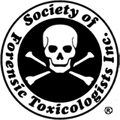
Update from Laurel Farrell, SOFT Representative to OSAC
The Society of Forensic Toxicologists was founded in 1970 and currently has a membership of 1,450 practicing forensic toxicologists and those interested in the discipline for the purpose of promoting and developing forensic toxicology.
SOFT’s objectives are:
- to provide a forum for the discussion and exchange of professional experiences between forensic toxicologists, and among individuals engaged in the administration of justice, in other governmental functions, and in allied fields;
- to promote the education and training of forensic toxicologists;
- to stimulate research and development in the field of forensic toxicology by providing educational opportunities and contributions to the literature;
- to review and make recommendations on pending or existing legislation that relates to the field of forensic toxicology; and
- to promote and assist in providing adequate availability of forensic toxicology services.
SOFT provides a forum for the exchange of information and ideas among toxicology professionals in a mentoring, collaborative atmosphere at its annual meeting. SOFT has a long history of supporting laboratory accreditation and personal certification.
SOFT members actively participated in SWGTOX and now over 40 SOFT members are actively supporting the OSAC initiative through service as members at all levels of the OSAC as well as affiliates on Toxicology Subcommittee Task Groups.
SOFT-sponsored programs, such as national and regional workshops, newsletters, and technical publications, as well as presentations at the annual meeting are the primary mechanisms to keep the SOFT membership up-to-date on OSAC activities, including how to become involved as an affiliate or member, how to participate by commenting on standards in development and how to implement standards that have been placed on the OSAC Registry.
Related News
The National Science Foundation has featured José Almirall in its recent post, “Celebrating Hispanic Scientists.”
Dr. Almirall is a Professor in the Department of Chemistry and Biochemistry and Director Emeritus of the International Forensic Research Institute (IFRI) at Florida International University and Director of the NSF-funded Center for Advanced Research in Forensic Science ﴾CARFS﴿. He was a practicing forensic scientist at the Miami-Dade Police Department Crime Laboratory for 12 years, where he testified in over 100 criminal cases in state and federal courts prior to his academic appointment at FIU in 1998. Professor Almirall has authored one book and ~ 130 peer-reviewed scientific publications in the field of analytical and forensic chemistry and presented ~ 650 papers and workshops in the U.S., Europe, Central and South America, Australia, New Zealand, Japan and South Africa. The interests of Prof. Almirall's research group include fundamental analytical chemistry and the development of analytical chemistry tools for use in forensic science including materials analysis, trace detection and analysis of drugs and explosives. His research group has been awarded three patents resulting from technology developed at FIU and received ~ $ 8 million in research funding from federal agencies such as the NSF, DoD, NIJ, TSWG, NIST and from industry sources. Some of the research in his group has been transitioned into 5 different ASTM standard methods of analysis.
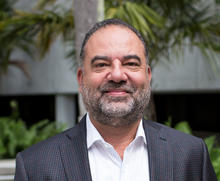
Prof. Almirall is a Fellow of the American Academy of Forensic Sciences (AAFS), the founding chairman of the Forensic Science Education Programs Accreditation Commission (FEPAC) of the AAFS, past Chair of the FBI-sponsored Scientific Working Group on Materials (SWGMAT) Glass subgroup, Editor-in-Chief of Forensic Chemistry and was appointed to serve on the Scientific Advisory Committee of the Department of Forensic Science Commonwealth of Virginia by two different governors of the State of Virginia. Dr. Almirall has served as a consultant to the United Nations Office on Drugs and Crime (UNODC) and to the International Atomic Energy Agency (IAEA) on forensic science matters.
He was appointed to serve on the Forensic Science Standards Board in 2015.
To read the story “Celebrating Hispanic Scientists,” see: https://medium.com/@NSF/celebrating-scientists-23087207f433
OSAC in the News
Five Winners Announced for 2018's Women in Biometrics Awards (Credit: PRWeb)
New Standard Will Help in Setup of Forensic Audio Labs (Credit: Officer.com)
Hollis Working on Documentary Standards with the Dogs and Sensors NIST OSAC Subcommittee (Credit: Dogs4Diabetics Facebook page)
Forensic Exhibit: Meetings and Workshops
Report: Forensic Firearms Process Mapping Project, USA—Workshop Report NIST-OSAC (see page 12) (Credit: Australia New Zealand Policing Advisory Agency (ANZPAA))
On the Horizon
- Biology/DNA SAC + 3 Subs, Physics/Pattern Interpretation SAC + 5 Subs, Digital/Multimedia SAC + 4 Subs, and Resource Committees OSAC Standards Meeting, December 11-14, 2018 – Phoenix, AZ

- Winter FSSB Meeting 2019, February 6-7, 2019 – Miami, FL
- Summer FSSB Meeting 2019, June 3-5, 2019 - Gaithersburg, MD
- Chemistry/Instrumental Analysis SAC + 6 Subs, Crime Scene/Death Investigation SAC + 7 Subs, and Resource Committees OSAC Standards Meeting, July 9-12, 2019 – Charlotte, NC or Orlando, FL or Ft. Lauderdale, FL (Tentative)
- Biology/DNA SAC + 3 Subs, Physics/Pattern Interpretation SAC + 5 Subs, and Digital/Multimedia SAC + 4 Subs OSAC Standards Meeting, July 23-26, 2019 – Charlotte, NC or Orlando, FL (Tentative)
NIST Activities
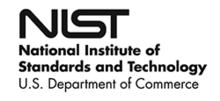
New Protocol for Measuring Background Levels of Drugs in Crime Labs
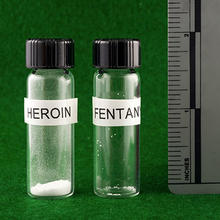
If chemists want to detect small amounts of drugs like fentanyl, they may need to keep an eye on background levels.
NIST Updates Forensic Standard Reference Materials

New standard bullet, human DNA standard enable accurate measurements in forensic science labs.
Database of Software “Fingerprints” Expands to Include Computer Games
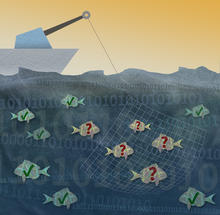
Digital forensics experts use NIST’s National Software Reference Library to speed their investigations.

